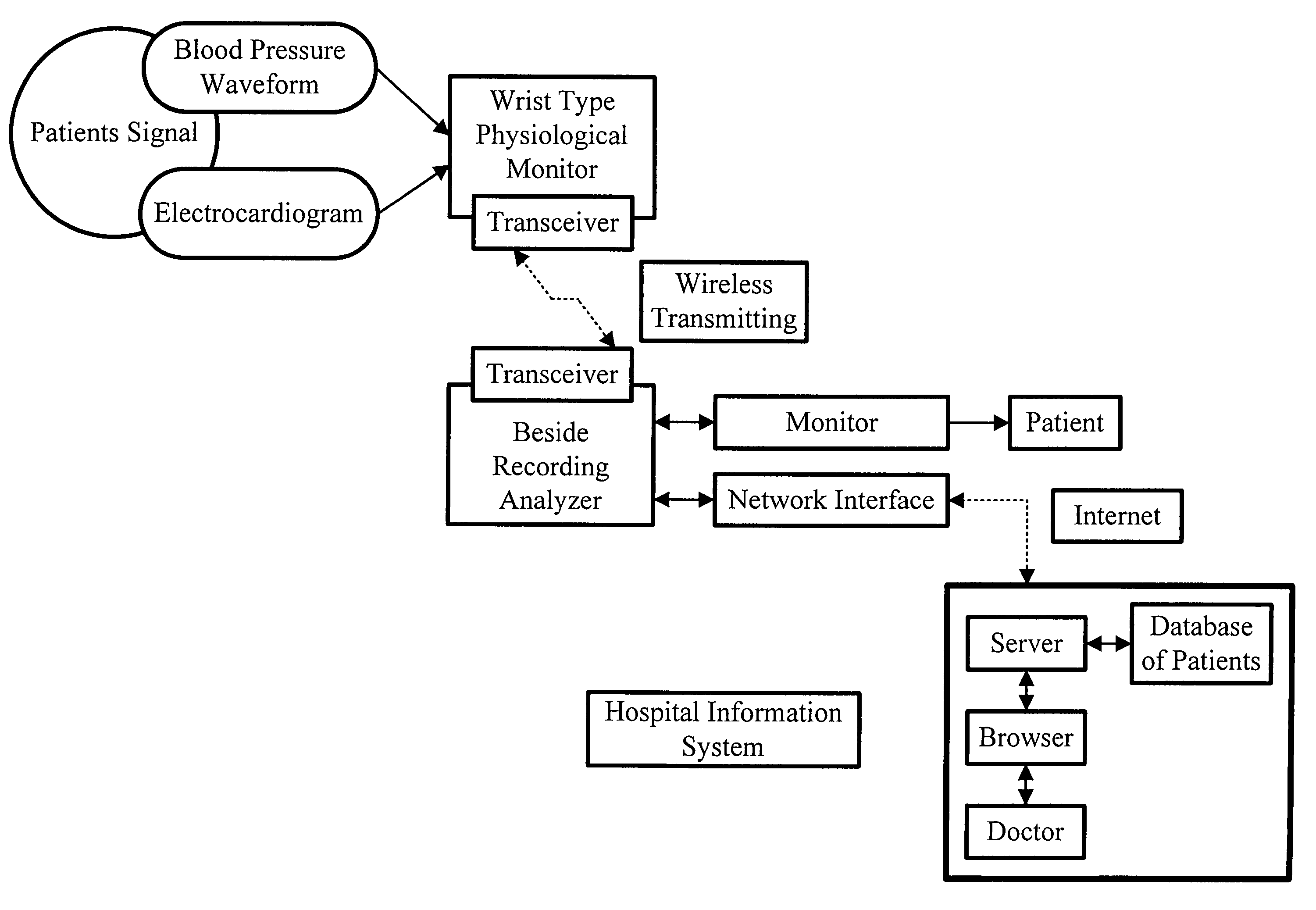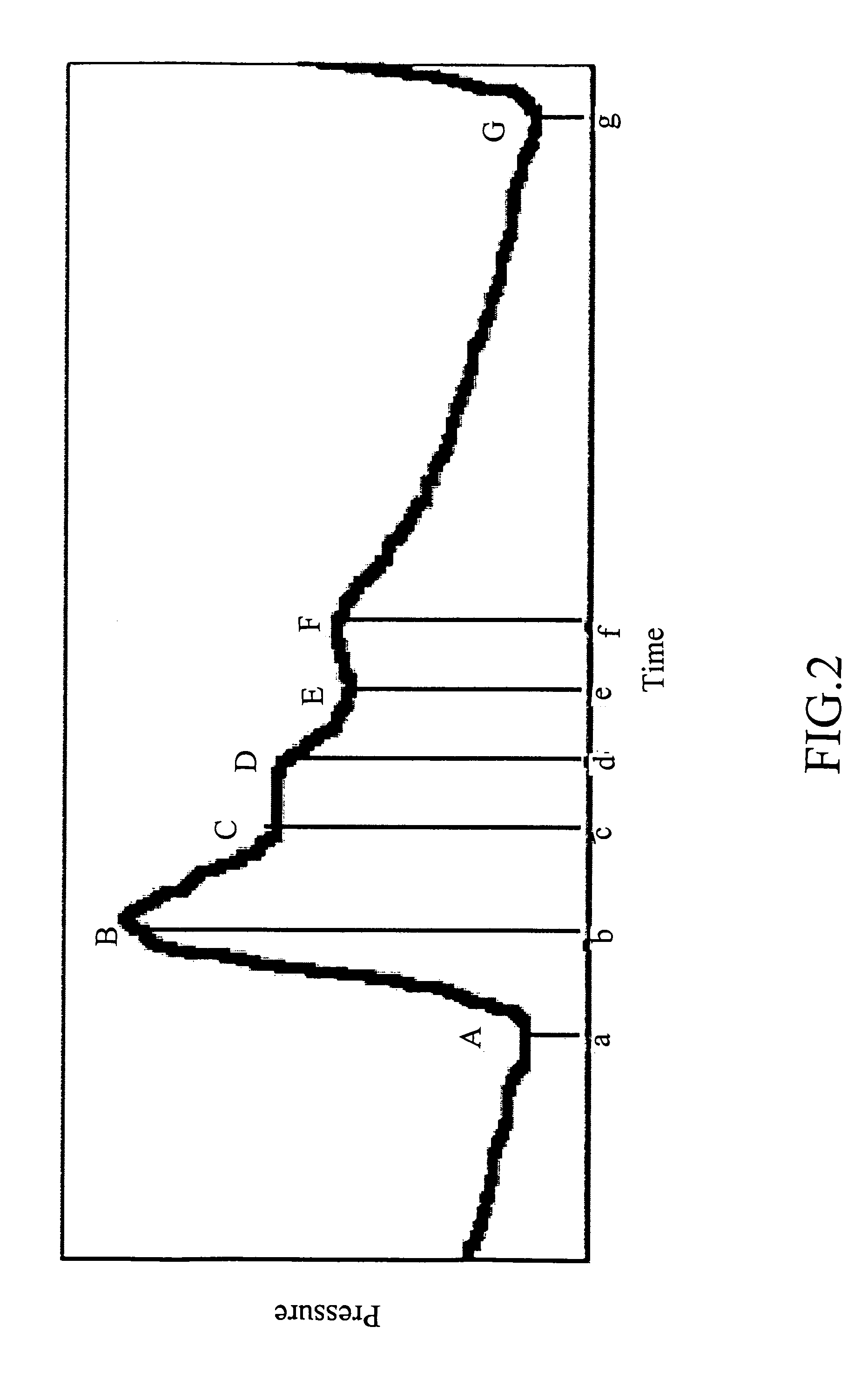Non-invasive apparatus system for monitoring drug hepatoxicity and uses thereof
a technology of hepatotoxicity and non-invasive equipment, which is applied in the field of non-invasive apparatus system for monitoring drug hepatotoxicity, can solve the problems of very few patients, extremely low rate, and emerging acute liver side effects, and achieve the effect of preventing the development of severe liver poisoning cases
- Summary
- Abstract
- Description
- Claims
- Application Information
AI Technical Summary
Benefits of technology
Problems solved by technology
Method used
Image
Examples
example 1
Monitoring the Changed Liver Function Induced by the Drug—Dog Experiment
[0045]Two adult dogs weighing 12 and 15 kg were used. One (coded A) of them received 500 mg / kg of body weight of acetaminophen oral solution (dissolved in water); and the other one (coded B) received a higher concentration (1,200 mg / kg of body weight) of acetaminophen via subcutaneous injection. After Nembutal was injected and the respirator was put on, the hair on the front legs of the dogs was shaved and a blood pressure waveform sensor was inserted by operation. The waveform of artery blood pressure waveform on brachial position was continuously recorded and analyzed by a computer with a frequency of 100 data per minute. After surgery and before the drug was orally taken or injected, the blood pressure waveform of each dog was measured for two hours as the baseline. After the drug was orally taken or injected, the blood pressure waveform was continuously monitored for analyzing the hepatotoxicity induced by t...
example 2
Monitoring the Hepatotoxicity Induced by Drugs—Clinical Trial of Human Body
[0055]Two middle-age patients had been diagnosed to have acute hepatitis induced by unknown drugs after being outpatient serviced or hospitalized. The hepatitis level of Code A patient was minor, and the value of ALT (SGOT) was 120 (IU / liter) when the patient was hospitalized, and then the value reduced to 42 (IU / liter) and close to a normal value after treatment, rest and recuperation. The physiological signals and the blood test results are shown in TABLE 9.
[0056]
TABLE 9The Physiological Signals And The Blood Test Results Of Code APatientExperimental conditionsMorbidity periodAfter recoveryPulse (beats / minute)7665Systolic pressure (mmHg)110105Diastolic pressure (mmHg)7070Body temperature (° C., ear)36.536.0ALT (SGPT); IU / liter12042Biliflavin MG / DL0.50.4
Another patient coded B had a more severe hepatitis level, and the value of ALT (SGOT) was 603 (IU / liter) when the patient was hospitalized, and the value re...
PUM
 Login to View More
Login to View More Abstract
Description
Claims
Application Information
 Login to View More
Login to View More - R&D
- Intellectual Property
- Life Sciences
- Materials
- Tech Scout
- Unparalleled Data Quality
- Higher Quality Content
- 60% Fewer Hallucinations
Browse by: Latest US Patents, China's latest patents, Technical Efficacy Thesaurus, Application Domain, Technology Topic, Popular Technical Reports.
© 2025 PatSnap. All rights reserved.Legal|Privacy policy|Modern Slavery Act Transparency Statement|Sitemap|About US| Contact US: help@patsnap.com



